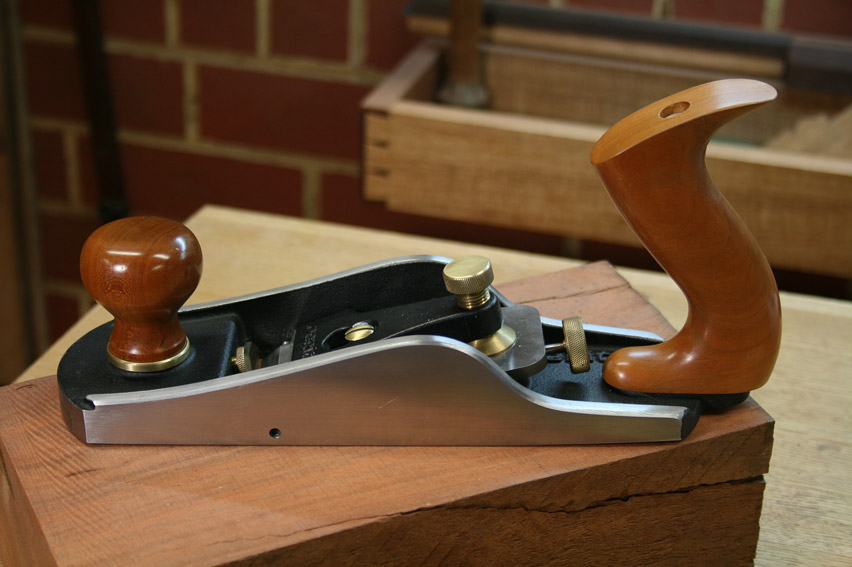Hello guys I might be in the market for a new plane. I have a no6 and no4 plane. One I find too big and the other too small. I like the wider cutter of the No6 so I am thinking of buying a no5 1/2.
I find the handle on the bedrock, in my case woodriver(bought like 10 years ago) too small. The handle on the LV plane seems quite a bit taller.
My fingers are not big, but my hand is about 4.5 inches wide. I don't like the three finger grip. I like to hold the handle comfortable with all my fingers.
Can someone tell me about the rigidity of the planes I mention in the title? The bedrock seems to be quite a bit more rigid because the frog is more substantial.
One thing I find also very important is I like to tune my planes to a high tolerance. I feel the bedrock design has no secrets for me and I can tune practically every aspect. With the LV jack plane the mouth can be adjusted. I wonder how flat/coplanar that part is with the sole. I dont recall reading anybody mentioning this. With the bedrock design moving the frog does not affect the front of the mouth. With LV it does.
I guess the bedrock is much easier to adjust the depth of the cut whereas the LV is more precise and has much less backlash?
In general I would say the LV planes are not really visually attractive though the LV low angle jack is ok. A Clifton or LN 5 1/2 looks prettier I think.
I would like to read the opinion of people who have used both planes. I am not interested in old planes. Please dont tell me I cant go wrong with either brand, I already know that.
Thanks.
I find the handle on the bedrock, in my case woodriver(bought like 10 years ago) too small. The handle on the LV plane seems quite a bit taller.
My fingers are not big, but my hand is about 4.5 inches wide. I don't like the three finger grip. I like to hold the handle comfortable with all my fingers.
Can someone tell me about the rigidity of the planes I mention in the title? The bedrock seems to be quite a bit more rigid because the frog is more substantial.
One thing I find also very important is I like to tune my planes to a high tolerance. I feel the bedrock design has no secrets for me and I can tune practically every aspect. With the LV jack plane the mouth can be adjusted. I wonder how flat/coplanar that part is with the sole. I dont recall reading anybody mentioning this. With the bedrock design moving the frog does not affect the front of the mouth. With LV it does.
I guess the bedrock is much easier to adjust the depth of the cut whereas the LV is more precise and has much less backlash?
In general I would say the LV planes are not really visually attractive though the LV low angle jack is ok. A Clifton or LN 5 1/2 looks prettier I think.
I would like to read the opinion of people who have used both planes. I am not interested in old planes. Please dont tell me I cant go wrong with either brand, I already know that.
Thanks.





